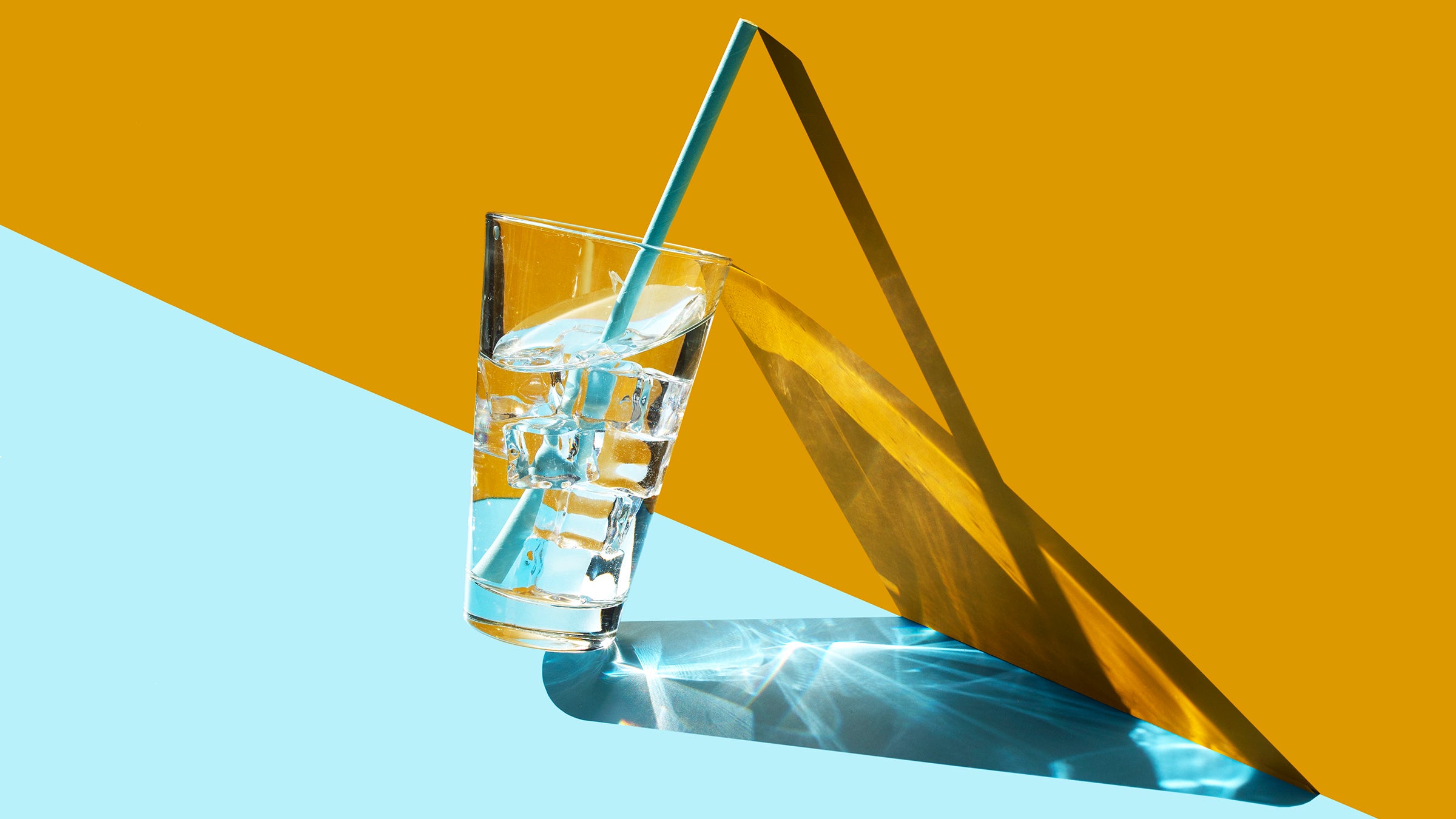Exactly How Much Water Do You Need Each Day in the Summer?

(Photo: Getty Images)
With the summer months come increased temperatures, increased sweat loss, and an increased risk of dehydration. For runners, this can be very scary and serious, and can have a significant impact on our health and performance. How do you know if your summer hydration is up to par and that you are drinking enough water each day?
Our bodies are always seeking equilibrium. Water balance happens when our intake from fluids (and some foods) is equivalent to the water we lose, mainly through urine, sweat, and feces. Conversely, dehydration occurs when our fluid losses are greater than fluid intake, and inhibits the body’s ability to cool itself during exercise. Dehydration can have lasting effects, such as a slowed delivery of nutrients and oxygen to cells, altered body temperature, increased muscle cramps, decreased cognitive function and concentration, and more. It can take up to 24 hours for the body to regain fluid balance after dehydration.
Another reason runners should care about their hydration? It literally helps our bodies function better. “Our joints are made up of about 70 percent to 80 percent water, so lack of hydration can cause joint pain,” says Staci Lupberger, RD at the University of Colorado Anschutz Health and Wellness Center.
How Much Water Do You Need a Day to Stay Hydrated?
While the old recommendation to drink eight glasses of water a day may be a good general guidance for the average person, athletes likely need more. Individual needs vary from person to person and are largely dependent on fluid lost. Fluid needs are higher in heat and humidity, travel, altitude, illness, and during intense training cycles.
And while some people rely on thirst to guide their drinking habits, that sensation declines as we age. It is especially important for older athletes to make sure they are a hydrated without waiting to feel thirsty.
To best preserve homeostasis, athletes should work on fluid management before, during, and after exercise, as explained in research conducted by the Academy of Nutrition and Dietetics, the American College of Sports Medicine and Dietitians of Canada. Beginning exercise well-hydrated is important, as it is challenging to match fluid intake to sweat loss while exercising. A general guideline is to consume eight ounces of fluid 15 to 30 minutes before exercise and upwards of 16 ounces a few hours prior. During training, drinking to prevent thirst and greater than a 2 percent loss of body weight is recommended. While individual needs vary, a good starting point is 0.4 to 0.8 liters per hour.
After exercise, drink 16 to 24 ounces of water for every pound lost. Including sodium in fluids and foods can also help with fluid retention. Dairy milk, chocolate milk, and soy milk are great post-workout options with sufficient carbohydrates, protein, and electrolytes. Even non-dairy milk options offer small amounts of sodium and potassium to help replenish electrolyte stores.
RELATED: The Best Hydration Products For Every Kind of Runner
Staying On Top Of Your Summer Hydration
The average person sweats between 0.3 and 2.4 liters per hour during exercise. There is a large individual variability in terms of hydration and sweat loss rates, as it is influenced by genetics, gender, age, temperature, exercise intensity, fitness level, and acclimatization. Unless you have the ability to perform a sweat rate test, there are some other things you can do to stay on top of your hydration levels. These are our summer hydration pro tips.
1. Monitor your urine.
Urine that is darker in color and low in volume is indicative of dehydration. Aim for a light-colored (not clear) urine at regular intervals to gauge your hydration status.
2. Weigh yourself before and after exercise.
Weigh yourself naked before and after exercise. Generally speaking, each pound of weight lost is equivalent to about 16 ounces of fluid lost. You want to replenish that amount of liquid plus 125 to 150 percent more to achieve optimal hydration, since sweat and urine losses continue after exercise.
So, if you lost one pound of weight after a training session, aim for 24 ounces of water to achieve “rehydration.”
To achieve the best performance, avoid losing more than 2 to 3 percent of your body weight during exercise (about three to four pounds for a 150-pound athlete).
Here’s how to calculate your body weight loss percentage:
- (weight before exercise – weight after exercise)/weight before exercise
3. Inspect your sweat.
If your sweat is extra salty, it likely contains a high concentration of sodium. Knowing this, you’ll want to consume more sodium-containing food and beverages before, during, and after prolonged exercise to manage your hydration status.
4. Consume water and electrolytes.
While drinking water is important, it’s not the only answer to proper hydration. Drinking water without consuming sufficient electrolytes can lead to serious consequences, such as hyponatremia, or a low concentration of sodium in relation to water. Increasing sodium levels through electrolyte consumption can help your body retain fluids while stimulating thirst. Sodium intake will also decrease your sweat rate, therefore decreasing the amount of water lost in sweat.
Water intake is something that should be considered at all times in summer months, not just around training sessions. Focus on your summer hydration throughout the entire day by employing simple tips like carrying a water bottle at all times, drinking water at meals, and incorporating ample fruits and vegetables with a higher water content in your diet. While sports drinks can also provide plenty of electrolytes, your everyday liquids can supplement, as well. Consuming electrolyte-rich food and drinks at every meal can help ensure adequate hydration.
RELATED: Sip on This Electrolyte-Rich Smoothie After Your Next Hot, Sweaty Run